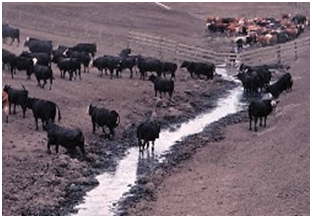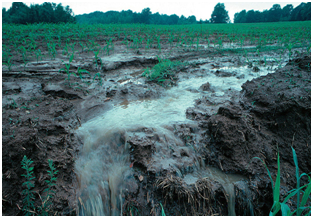AGRICULTURE WASTE REMEDIATION PROJECT
NEED FOR AGRICULTURE WASTE REMEDIATION
Agriculture farming and livestock production create many sources of waste or polluted effluent streams. The amount of animal waste produced by livestock and poultry in factory farms is more than 10 times that produced by the entire US population.
Excessive accumulation of dissolved nutrients like nitrates and phosphates from fertilizer and livestock waste results in a process called eutrophication. That simulates the growth of algae and other plant life depleting oxygen from the water. Water is acidified, aquatic life is affected, fishing grounds are diminished and water for consumption and recreation compromised and even unhealthy for human activity.
While some large agri-operations have waste treatment facilities, most waste is stored in open ponds or pits and/or used as untreated fertilizer on fields with consequences such as:
- Wastewater diffusion into groundwater
- Runoff waste flows into open streams, rivers and lakes
- Pollutant greenhouse gases methane and nitrous oxide, ammonia, hydrogen sulfide and more are produced
- High manure content of nitrogen and other nutrients creates dead zones in waterways downstream
- Dead zones promote algae growth which consumes oxygen required by other natural life
- Application of animal waste can be a cause of environmental heavy metal contamination, from metals used in feed, including copper, zinc and lead
- Recent data shows runoff from manure and other agricultural fertilizer in the Mississippi floodplain was more than 5,000 square miles: this is the size of Connecticut and Rhode Island combined
BENEFIT OF AGRICULTURE WASTE REMEDIATION
Water recovery and agriculture waste reduction, especially if performed “at the source”, addresses all of the issues mentioned above. Dewatering, or making a more concentrated “sludge” or “brine”, makes recovery and reuse methods much more cost effective.
- Produce freshwater for irrigation from the waste stream
- Destroy microorganisms in the waste stream
- Breakdown compounds for recovery of valuable nutrients
- Enhanced soil and plant carbon sequestration
- Concentrate brine for reapplication
- Reduce, or eliminate, surface runoff
- Enable a more regenerative farm policy food system
R&D METHODOLDGY FOR AGRICULTURE WASTE REMEDIATION
Application of the new sonics based technology addresses both the breakdown of compounds and destruction of microorganisms but also separation of the total dissolved solids in the resultant waste stream. Agriculture waste varies depending on the type of farming and livestock production of a particular business model. The waste must first be evaluated and configuration of the process established based on various combinations of waste makeup.
That evaluation dictates the application parameters of the disassociation stage of the process through the SDA stage. The next stage of development is determining the extraction parameters for removing the total dissolved solids (TDS) through the SSA stage of the process.
Ultimately, the secondary use of the results of the remediation processes developed must then be considered to determine if the previous stages need to be altered for better results. The degrees of success in recovery of useful waste by-products will likely cause reevaluation of reuse.
STATUS OF AGRICULTURE WASTE REMEDIATION
Development Stages:
- Determine the effect of the SDA stage on various compositions of ag waste streams
- Evaluate methods to “drop out” various nutrients from SDA process
- Determine the extraction method(s) to achieve optimum TDS removal objectives
- Evaluate viability of reuse of extracted by-products
- Evaluate impact of downstream release of remaining effluent
Development Status:
- SDA “test mule” is available for development of disassociation on the incoming stream
- SSA “test mule” is available for development of the concentrate extraction process stage
- Further progress and rate of development are funds and client dependent
W3 product philosophy is based in making the product fit the application rather than making the application fit the product.
All selections of equipment are first preceded with a thorough analysis of your specific application and production needs with one of our experienced W3 Ultrasonic application personnel.
Start the Process Development analysis yourself or Contact W3 directly.

